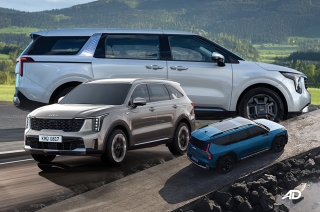
It’s one of the black boxes that accompany buying a second-hand vehicle. Since the MMDA and a handful of Local Government Units (LGUs) enforce the no-contact apprehension program (NCAP) among other traffic violations that can be attached to cars, it’s now up to second-hand car buyers to be more vigilant about checking the history of their next big purchase before money changes hands.
It’s extremely important to check the condition of the car, but it’s even more important to check if your next second-hand purchase will come with a few surprises such as unpaid violations. Having these violations will prevent you from registering the car until everything is paid for. In an ideal world, all sellers will always settle any obligation before letting go of the car, but that’s not always the case.
Before you buy

Make sure to get the details from the buyer and check the plate number of the vehicle. Check whether there are violations attached to it through the use of the sites of the LGUs or the MMDA that support the NCAP. To do so, all you need to do is get the plate number or the conduction number of the vehicle in question.
Cut a deal
If you really want the car regardless of the violations attached to it, perhaps it is best to talk to the owner and ask if they can settle the violations before you go through with the purchase. If you’re dropping a lot of money on a second-hand vehicle, it should be common courtesy and part of a seller’s obligation for them to take care of the car before selling it. Make sure that the negotiation here is done before money exchanges hands.
However, if the owner is unwilling to settle his violations on his own, you have the choice to walk away or deduct the violations from the final negotiated price of the vehicle. Do this after you’ve negotiated the lowest possible price. Check and show your findings on the websites in order to make your case with the seller. If the seller is unwilling to budge on either front, perhaps it is best to save yourself the hassle and walk away.
If the deal was made first, and the discovery after…
Sometimes we get a little carried away and too trusting of the seller that we continue with the purchase without making sure everything is clean. If you do end up buying a second-hand car with a few violations attached to it, there are some workarounds that you can do with the LTO and the LGUs.
Gather the documents from the sale

Whenever a vehicle is sold to another party, a few things need to change hands, and that includes the Official Receipt and Certificate of Registration (OR/CR), deed of sale, valid ID photocopy of the seller, among other things like the manual, service booklet, and others.
Because of the documents, you now have a couple of assets at your disposal in order to transfer the vehicle’s ownership to you and whatever violations back to the seller. Once you get all the documents ready, it’s time to go to the LGUs or LTO depending on where the violations were recorded.
Settling with the original owner
If you can settle the case with the owner, and they’re willing to pay upfront for their violations, you can settle if you have the OR/CR, letter of authorization, and the money ready. For most LGUs, you can go to designated Bayad Centers in order to do so, while other violations will require you to head to the government office to settle.
Settling without the original owner

Without the owner, it’ll be hard to settle things with the offices, but not impossible. If you have violations attached to the vehicle, it could be possible to go to the official documents, in hand, in order to get the traffic fines transferred. Though, you will have to make sure that the deed of sale is signed and notarized, plus make sure that the vehicle’s documents are original copies for the best shot at making those violations go to their rightful owner.
Latest Features
-
An all-electric future: The Porsche Macan Electric / Featured Article
Porsche’s Macan goes all-electric; it’s a new beast with an electrified heart, yet unmistakably Porsche in performance and spirit.
-
Which Kia should I buy? / Featured Article
We’re here to help you decide which Kia vehicle is best for you, whether it’s a sedan, crossover, or minivan.
-
Why Lynk & Co is a good option for luxury car buyers / Featured Article
Lynk & Co offers premium value for those exploring the luxury market.
Popular Articles
-
Electric Vehicles in the Philippines for under P1 million
Jerome Tresvalles · Aug 19, 2025
-
Top 3 Cars For Every Lifestyle—What Cars Are Right For You? | Behind a Desk
Caco Tirona · Apr 24, 2024
-
5 Tips to Maximize Fuel Efficiency
Jerome Tresvalles · Sep 09, 2024
-
Five driving habits that are draining your fuel tank
Jerome Tresvalles · Jun 24, 2025
-
Can engine braking harm your engine?
Jerome Tresvalles · Sep 11, 2025
-
Do electric cars even need maintenance?
Jerome Tresvalles · Oct 23, 2024
-
Best vehicles for an active outdoor lifestyle
Shaynah Miranda · Jul 25, 2024
-
How to drive different types of vehicle transmissions
May 23, 2024
-
5 easy ways to keep your car interior clean
Allysa Mae Zulueta · Nov 15, 2021
-
How to survive Metro Manila traffic
Earl Lee · Aug 16, 2022




